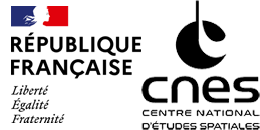Community events
Electric propulsion offers advantages for many missions and applications, but like many spacecraft systems, integration of electric thrusters on spacecraft can lead to significant systems engineering challenges. Assessing thruster plume characteristics and interactions with the spacecraft are crucial to determine thruster positions and other spacecraft design issues. The purpose of the workshop was to draw up a state of play of these plasma plume effects.
The program of the day was the following:
Thursday 13th June (Morning):
1) Experimental characterization and modeling of the plasma plumes
- Plasma plume characterizations (ions/electrons density, flux, temperature and velocity distribution, electric potential)
- Tank effects (background pressure, wall electric polarization, probes effects, erosion contamination, backflow)
- Plasma plume modeling (electron model, boundary conditions for ions and electrons, cathode effect/neutralization, collision effects)
2) Experimental characterization and in-flight experiments of plasma plume effects
- Inflight measurements of the torque, the floating potential, the current collection or power losses
- Onground measurements of the floating potential, the current collection, power losses and the discharge risk
- Erosion and contamination due to the plume
Thursday 13th June (Afternoon):
3) Spacecraft plume interaction at the system level
- Coupling between the solar panels and the thruster (effects depending on the SA layout and bus voltage, direct drive, …)
- Effect of the natural environment and modelling on the neutralization / modelling of the cathode and multifiring
- Transient effects with thruster power on/off
- Plume interaction with the antenna
4) Round table on the new missions and perspectives
- Discussion and synthesis on the subjects treated during the previous sessions
- What the new constraints for future missions?
- Constraints on the plume effects can be take into account in the thrusters design ? or should be prevent at the system level or at the level of the other subsystems
For any questions, please contact the organizers:
Claude BONIFACE (CNES)
claude.boniface@cnes.fr
Pierre SARRAILH (ONERA)
pierre.sarrailh@onera.fr




